Did you know that understanding number words is not only crucial for clear communication but also for comprehending the number system? By learning to spell number words, we can identify connections between numbers and express numerical values accurately. Whether you’re a teacher, student, or someone who wants to improve their math and language skills, this blog post will guide you through the fascinating world of number words, from single-digit to large numbers, and everything in between.
Key Takeaways
- Understand the essentials of number words from single-digit to three-digit numbers.
- Learn rules and guidelines for writing numbers in word form, including place value importance, hyphen usage and conversion process.
- Become aware of common mistakes when working with number words for clear communication.
Essentials of Number Words

Number words, also known as number names, are the alphabetical representation of numerical values, fostering clear communication and understanding across various contexts. They play a vital role in identifying and learning numbers, as well as recognizing the connection between them.
This section delves into single-digit, two-digit, and three-digit number words, thus building a foundation for understanding their practical applications.
Single-Digit Number Words (0-9)
The journey of learning number words begins with single-digit numbers, ranging from 0 to 9. Familiarizing yourself with these numerals is the first step towards mastering the art of spelling numerical words. While the word “zero” doesn’t appear in any number name, it is an essential starting point for understanding the number system.
Knowledge of number words from “one” to “twenty” plays a significant role in understanding other number words. As you progress, you’ll notice patterns and connections among the number words that will make learning easier. Remember, practice makes perfect, so don’t shy away from revisiting these basic number words until you’ve mastered them.
Two-Digit Number Words (10-99)
Upon mastering single-digit number words, you can move to the realm of two-digit numbers, which range from 10 to 99. The pattern for writing numbers from 10 to 19 is to append the term “teen” to the end, such as “ten,” “eleven,” “twelve,” and so on. For the tens place of all two-digit numbers, you’ll encounter distinct terms like:
- twenty
- thirty
- forty
- fifty
- sixty
- seventy
- eighty
- ninety
When spelling out two-digit numbers, you’ll need to combine the appropriate word for the tens place with the word for the ones place, using a hyphen in between. For example, “twenty-one,” “thirty-five,” or “sixty-eight” are written using this combination. In some cases, like with twenty five or twenty nine, you can write it without a hyphen as well.
Understanding these patterns and unique words equips you to spell any two-digit number using the skill to spell number words.
Three-Digit Number Words (100-999)
Having conquered two-digit number words, it’s time to explore the structure of three-digit number words, which include the hundreds place, the tens place, and the ones place. Each component plays a crucial role in accurately representing the number in word form, making it essential to understand the concept of three digits.
For example, the number 7575 would be written as “seven thousand five hundred seventy-five”. As the numerical values increase to three, four, five, six, seven, and more digits, the corresponding words for the numbers will also change. Mastering three-digit number words will prepare you for working with even larger numbers in the future.
Writing Numbers in Word Form: Rules & Guidelines

Certain rules and guidelines exist for writing numbers in word form to maintain clarity and comprehension. This section delves into the importance of place value, the usage of hyphens, and best practices for converting numerals to number words.
Place value is an important concept to understand when writing numbers in word form. It is the
Place Value Importance
Understanding numbers and their written form hinges on place value. Recognizing the place of each digit in a number enables us to read and express the number in words accurately, which simplifies communication of numerical information and performance of mathematical operations.
A place value chart can be an invaluable tool for grasping the structure of numbers and their written form. Familiarizing yourself with the place value names in the international system, like:
- ones
- thousands
- millions
- billions
- trillions
deepens your understanding of how numbers are constructed and represented in word form.
Hyphen Usage

Hyphens serve a significant role in number words, as they connect numbers or letters used as prefixes to a noun, illustrate compound numbers between 21 and 99, and form compound adjectives preceding a noun. Using hyphens in number words ensures that the meaning of the sentence is unambiguous and prevents misunderstandings.
When writing three-digit numbers that exceed one hundred, hyphens should only be used if the number being appended after “hundred” would require a hyphen independently. For example, “two hundred twenty-one” requires a hyphen, while “two hundred thirty” does not. Adhering to these guidelines ensures that your number words are clear and easily understood.
Converting Numerals to Number Words

Having learned the essentials of number words and the rules for writing them, we can now explore the process to convert numbers into words and how to write numbers as number words.
Regardless of whether you are working with small numbers (1-100) or large numbers (100+), it’s fundamental to understand the conversion process to represent numbers accurately in word form.
Small Numbers (1-100)
Converting numerals to number words for small numbers (1-100) requires understanding the patterns and unique words for each number, as well as the place value system and hyphen usage rules.
To practice converting numerals to number words for numbers 1-100, follow these steps:
- Write out the numbers one through nine.
- Write out the words for the numbers ten through nineteen.
- Count in tens from twenty to ninety.
- Combine words to compose any number from 1 to 100.
By following these steps, you can become proficient in expressing small numbers in word form.
Large Numbers (100+)
For large numbers (100+), the process of converting numerals to number words involves using the same rules and guidelines as for small numbers, but with the addition of terms like:
- “hundred”
- “thousand”
- “million”
- “billion”
- “trillion” and so on.
To convert numerals to number words for large numbers, start by locating the value you’re looking for in a place value chart and then following the chart across to find the corresponding number word. For example, the word form of 2022 is “two thousand twenty-two”.
Mastering the method for large numbers equips you to convert numerals to number words in any context.
Number Word Charts & Resources

We’ve compiled a list of helpful number word charts, word wall resources, and other tools to enhance your learning and teaching experience. These tools will not only aid in mastering number spelling but also provide a valuable reference for future use.
Number Words Chart (1-100)
A Number Words Chart (1-100) provides a comprehensive list of number words from 1 to 100, making it an excellent resource for learning and teaching number words. By counting in multiples, completing missing numbers, substituting number words, and starting with smaller groups of numbers, you’ll be able to practice and retain the spelling of numbers effectively.
The Number Words Chart (1-100) is a versatile tool that can be printed and used in the classroom or at home. Regularly referring to this chart reinforces your knowledge of number words and builds a strong foundation for understanding larger numbers.
Beyond 100: Chart for Higher Values
For number words beyond 100, including thousands and millions, a Beyond 100: Chart for Higher Values is available, providing a comprehensive list of number words for values from 100 to 999. This chart is structured into columns representing different number words, with each row denoting a different value.
To utilize the chart, locate the value you’re searching for in the left-most column, and then scan across the row to find the appropriate number word. For example, to find the numerical term for 1,000,000, you would look for the value 1,000,000 in the left-most column and then traverse the row to identify the corresponding numerical term, which is “million”.
Familiarizing yourself with this chart deepens your understanding of number words for higher values.
Practical Applications of Number Words
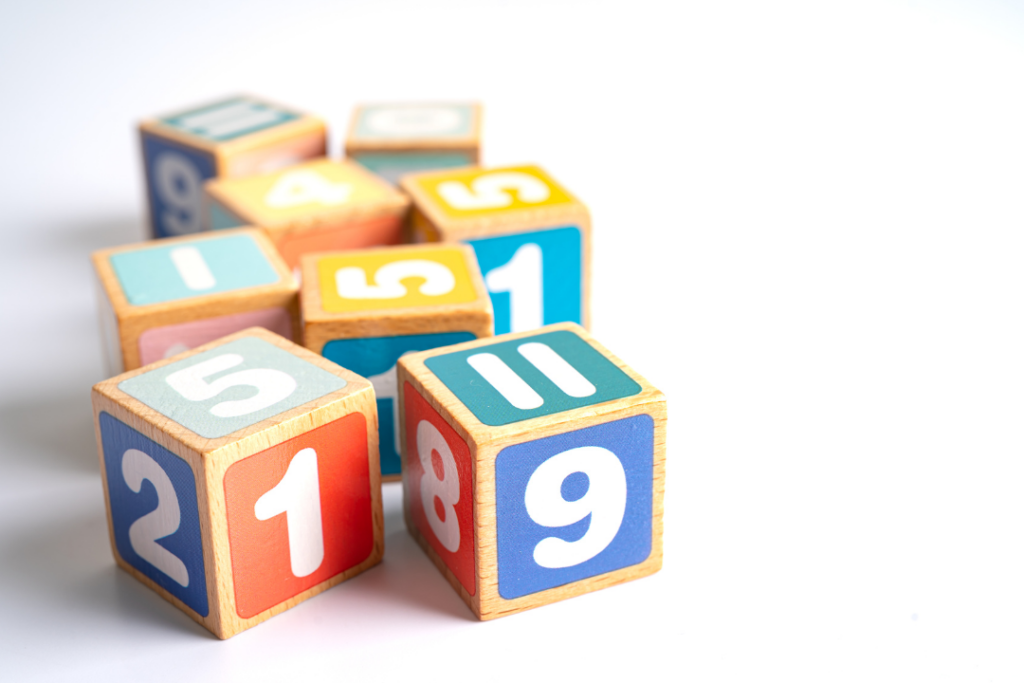
Number words are not just an abstract concept; they have practical applications in real-life situations. This section explores instances where number words are used, including writing amounts in words for checks and legal documents, and expressing ordinal numbers to denote rank or position.
For example, when writing a check, the amount should be written in words as well as
Writing Amounts in Words
Writing amounts in words is essential for checks and legal documents, as it ensures greater security and precision. To write amounts in words, you must utilize the place value system and hyphen usage rules, just as you would when converting numerals to number words for other purposes.
Practicing writing amounts in words enhances your accuracy and confidence when handling financial transactions and legal matters. Additionally, this skill will prove valuable in everyday life, as it reinforces your understanding of number words and their practical applications.
Ordinal Numbers
Ordinal numbers, such as “first,” “second,” “third,” and so on, denote rank or position. They play a crucial role in conveying information about the order or standing of things, making them an essential component of language and communication.
When using ordinal numbers, it’s important to adhere to the suffixes -st, -nd, -rd, and -th in order to accurately express rank or position. By mastering ordinal numbers, you’ll enhance your ability to communicate effectively and accurately in a variety of contexts.
Number Word Resources:
Spring Number Words
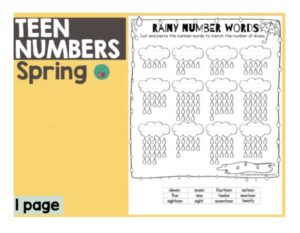
Spring is in the air, and what better way to engage young learners than with the Spring Teen Number Words worksheet? Designed for early learning, kindergarten, and grades 1 and 2, this worksheet focuses on teen numbers. Students will cut and paste number words to match the number of raindrops, making it a hands-on and interactive experience. Authored by Cherry Workshop, this PDF worksheet is a delightful way to reinforce counting and number word recognition.
Numbers & Number Words Printable Workbook
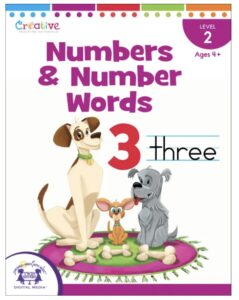
The Numbers & Number Words Printable Workbook is a comprehensive resource aimed at preschoolers, kindergarteners, and first graders. Created by Twin Sisters Digital Media, this 34-page printable packet offers a variety of activities that help children identify and name numbers 1-20, count to 100, and even grasp the concept of addition. The full-color pages are designed to build learning confidence and set the foundation for academic success.
Writing Number Words 1-10 Printable Workbook: Kindergarten Skill Builder
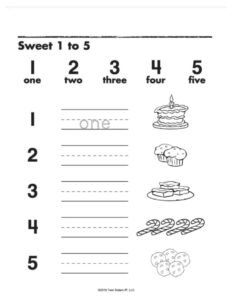
This workbook is a treasure trove for kindergarten teachers and parents alike. Crafted by teaching professionals, it aligns with grade-level standards and employs current teaching strategies. The workbook focuses on writing number words from one to ten and includes activities like tracing, matching, and pattern recognition. With 30 printable pages, children can revisit the activities until mastery is achieved, making it a valuable resource for skill-building.
Number Words: 20 Activity
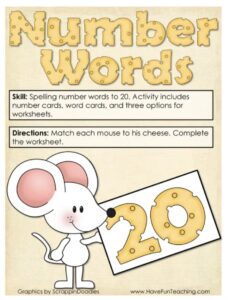
Designed for kindergarten, preschool, and grades 1 and 2, the Number Words to 20 Activity is an excellent tool for building math fluency. Created by Have Fun Teaching, this PDF activity helps students match numerals and number words from 1-20. It’s an ideal resource for teachers seeking extra practice materials for their students and offers a fun, interactive way to reinforce number recognition and word association.
Tips for Learning & Teaching Number Words

Whether you’re learning number words for the first time or teaching them to others, there are several tips and strategies that can help make the process more effective. This section provides helpful advice for both learners and educators, with the aim of ensuring a successful and enjoyable experience.
Memorizing number words in order, using mnemonic devices, and practicing writing numbers in word form are all effective strategies for learning number words. For instructors, employing visual aids, hands-on activities, games, and puzzles can make teaching number words engaging and fun. By breaking words into syllables, using rhymes, and providing ample practice opportunities, you’ll also help students retain the numerical terminology more easily.
Common Mistakes & Pitfalls to Avoid
Awareness of common mistakes and pitfalls in working with number words can prevent confusion and misinterpretation. By recognizing these errors and taking steps to avoid them, you’ll ensure that your communication and understanding of number words remains clear and accurate.
Some common errors to avoid when working with number words include:
- Discrepancies in representing numbers
- Lack of spaces between numerals and units
- Inconsistent representation of units
- Referring to an ‘amount’ instead of a ‘number’
- Beginning a sentence with a numeral.
To prevent these mistakes, be sure to:
- Verify your work for accuracy
- Incorporate spaces between numerals and units
- Use consistent representation of units
- Refer to a ‘number’ instead of an ‘amount’
- Avoid starting a sentence with a numeral.
Summary
In conclusion, understanding number words is essential for clear communication, comprehension of the number system, and accurate representation of numerical values in various contexts. By mastering single-digit, two-digit, and three-digit number words, learning the rules and guidelines for writing numbers in word form, and utilizing helpful charts and resources, you’ll be well-equipped to tackle any numerical challenge that comes your way. So go forth, and embrace the world of number words with confidence and enthusiasm!
Frequently Asked Questions
What is an example of a number word?
An example of a number word is “thirty-two”, which is the expanded form of the two-digit number 32. Numerals are used to designate specific numbers, such as five, ten, fifty or one hundred.
How do you write words in numbers?
Write numbers using words for ones, tens, hundreds, and thousands place values, separated by commas. For example, “135,212” would be written as “one hundred thirty five thousand two hundred twelve”.
How do you write the numbers 1 to 20 in words?
From one to twenty, the number names are: one, two, three, four, five, six, seven, eight, nine, ten, eleven, twelve, thirteen, fourteen, fifteen, sixteen, seventeen, eighteen, nineteen and twenty.
What is the importance of understanding number words?
Understanding number words is essential for effective communication, gaining a better understanding of the numerical system and expressing numerical values accurately.
What are some common mistakes to avoid when working with number words?
To avoid common mistakes, always use consistent representations of numbers and units, insert spaces between numerals and units, refer to ‘numbers’ instead of ‘amounts’, and avoid starting sentences with numerals.
